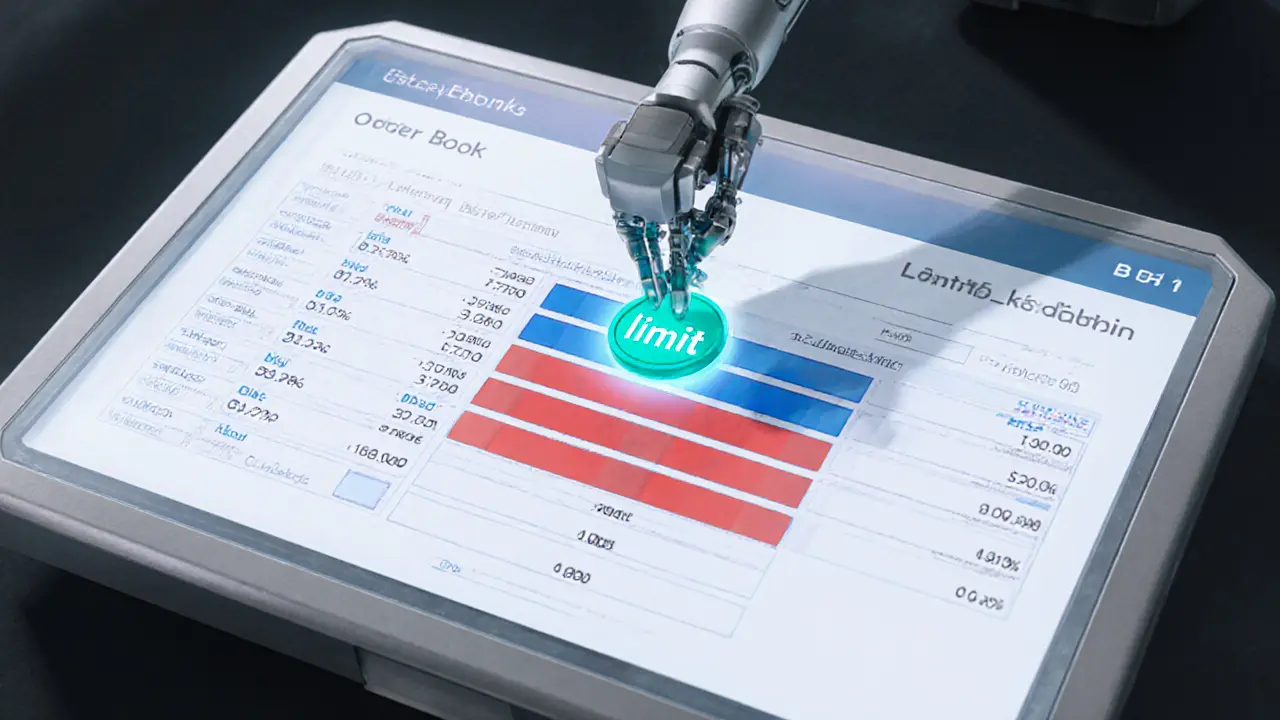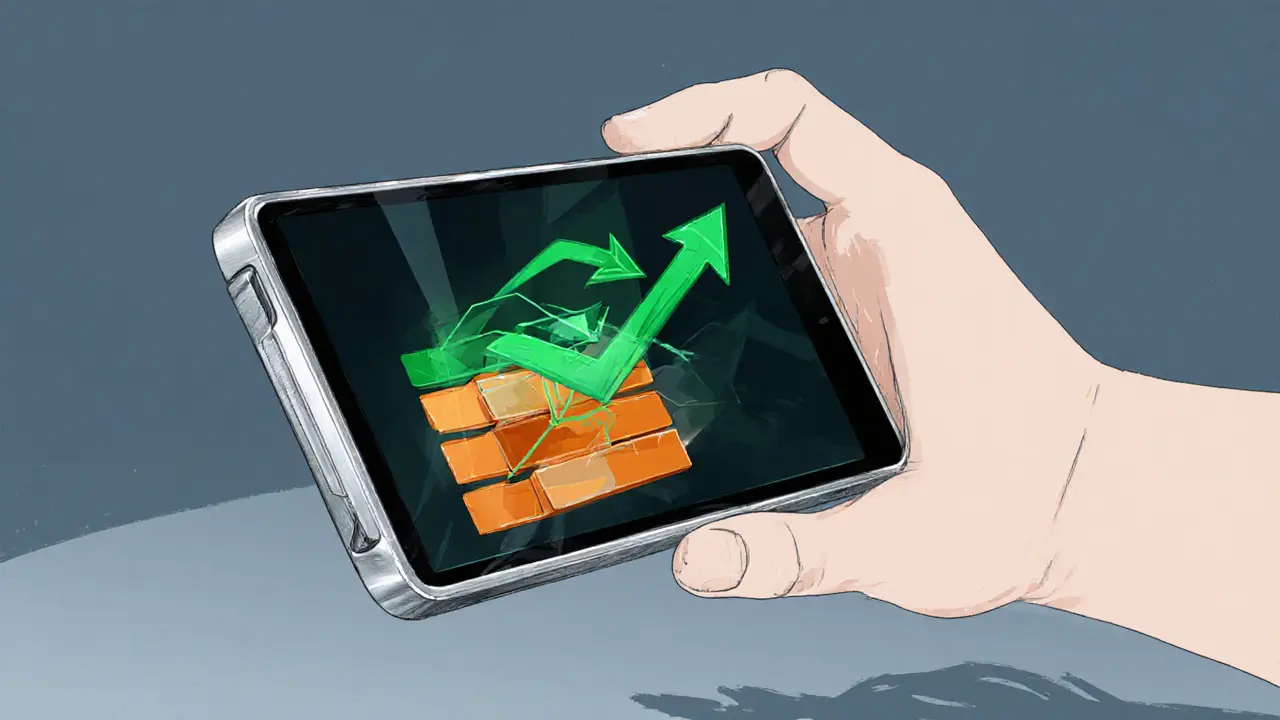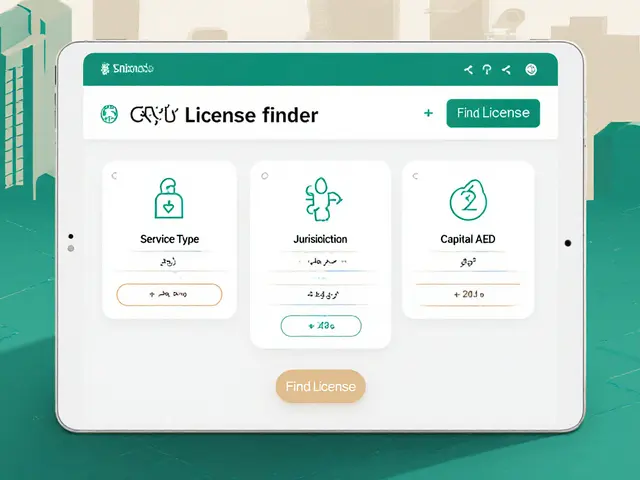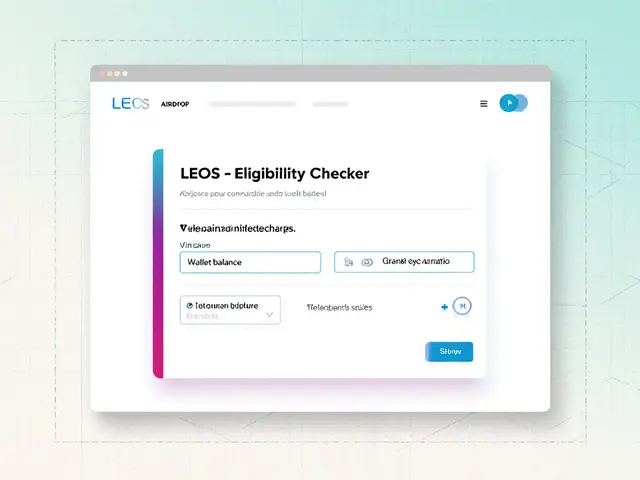Market vs Limit Order Simulator
Buy or sell immediately at the best available price. Guarantees execution but gives up price control.
Set a specific price for buying or selling. Price control but may not execute if market doesn't reach your level.
Order Simulation Results
Click "Simulate Order Execution" to see how your order would behave under current market conditions.
Comparison Table
| Feature | Market Order | Limit Order |
|---|---|---|
| Execution certainty | High - fills immediately if market is open | Variable - may never fill |
| Price control | Low - accepts whatever price is available | High - you set the max (buy) or min (sell) price |
| Liquidity impact | Takes liquidity (removes depth) | Provides liquidity (adds depth) |
| Risk of slippage | Present, especially in volatile markets | None - price is fixed, but risk of non-execution |
Ever wondered why a trade sometimes lands at a price you didn’t expect, while other times it hits the exact level you set? The answer usually boils down to two fundamental order types: Market Order - a command to buy or sell immediately at the best available price - and Limit Order - a request that only executes when the market reaches a price you specify. Understanding how each works inside the order book can mean the difference between a smooth trade and costly slippage.
Quick Takeaways
- Market orders guarantee execution but surrender price control.
- Limit orders lock in a price ceiling (buy) or floor (sell) but may never fill.
- The order book’s bid price and ask price dictate where market and limit orders meet.
- Liquidity providers (limit orders) earn maker rebates; takers (market orders) pay fees.
- Choose the right order type based on speed, price sensitivity, and market depth.
What Is a Market Order?
A market order tells your broker to buy or sell a security right now, accepting whatever price the market offers. In an electronic exchange the order instantly "takes" liquidity by matching against the best standing limit orders on the opposite side of the order book. For a buy, it hits the lowest ask price; for a sell, it hits the highest bid price. Because the trade is executed within milliseconds, market orders are the go‑to tool when you need to exit a position fast - say, after a sudden news shock.
What Is a Limit Order?
A limit order lets you set a price boundary. A buy limit will only fill at your price or lower; a sell limit will only fill at your price or higher. The order sits in the order book as a new price level, "adding" liquidity. If the market never reaches your level, the order remains unfilled - it may expire at the end of the day or stay active as a Good‑Till‑Cancelled (GTC) instruction for weeks. This price certainty is why many traders use limit orders for entry points, profit targets, or stop‑loss protection.
How Market and Limit Orders Meet in the Order Book
The order book is a live ledger of all outstanding limit orders, organized by price. The top of the book shows the best bid and best ask - the narrowest spread. When you submit a market order, the matching engine sweeps the book: it consumes the top‑most limit orders until the requested quantity is satisfied. This process is called "taking" liquidity, and each executed slice may occur at slightly different prices if the depth is thin, creating slippage. Conversely, a limit order becomes part of the book, "making" liquidity that other traders can later take. Exchanges often reward makers with lower fees or rebates to encourage a tight, deep market.
When to Use a Market Order
- High‑liquidity stocks or ETFs with tight spreads - slippage is minimal.
- Urgent exits after a breakout or news event.
- Closing positions before market close to avoid overnight risk.
- Algorithmic strategies that rely on speed rather than price precision.
Because the trade executes instantly, you don’t have to monitor the market after the click. However, avoid market orders in low‑volume assets, during after‑hours sessions, or when the spread widens dramatically - you may pay several ticks more than anticipated.

When to Use a Limit Order
- Targeted entry points near support levels.
- Profit‑taking at a predetermined resistance.
- Risk management - setting a sell limit above your entry to lock in gains.
- Low‑liquidity environments where you want to avoid large slippage.
Limit orders are especially handy for swing traders who can afford to wait for the market to come to them. Remember that part of your capital remains locked until the order fills or expires, so factor that opportunity cost into your planning.
Key Risks & Pitfalls
Slippage is the biggest enemy of market orders. In a fast‑moving market, the best ask may jump from $10.00 to $10.20 before your order finishes filling - you end up paying $0.20 more per share. For limit orders, the risk is non‑execution. If the price never reaches your limit, you miss the trade entirely. Partial fills are another nuance: a large limit order may only match a fraction of the depth at your price, leaving the rest hanging and potentially exposing you to unintended market exposure later.
Practical Checklist
- Identify the asset’s average daily volume and bid‑ask spread.
- Decide if speed (market) or price certainty (limit) is more critical.
- For limit orders, set a realistic price based on recent support/resistance.
- Choose order duration - Day vs. GTC - depending on your strategy.
- Monitor open limit orders; cancel or adjust if market conditions change.
- When using market orders, consider using a maximum‑acceptable‑price (trade‑through) filter if your broker offers it.
Side‑by‑Side Comparison
| Feature | Market Order | Limit Order |
|---|---|---|
| Execution certainty | High - fills immediately if market is open | Variable - may never fill |
| Price control | Low - accepts whatever price is available | High - you set the max (buy) or min (sell) price |
| Liquidity impact | Takes liquidity (removes depth) | Provides liquidity (adds depth) |
| Typical use case | Quick exits, high‑volume assets | Targeted entries, profit targets, low‑volume assets |
| Risk of slippage | Present, especially in volatile markets | None - price is fixed, but risk of non‑execution |
| Fee structure | Usually taker fees (higher) | Often maker rebates (lower or negative fees) |
Advanced Tips for Hybrid Strategies
Many platforms now offer hybrid order types that blend market speed with limit protection - for example, a "market‑if‑touched" order becomes a market order once the price hits a pre‑set trigger, while a "stop‑limit" order becomes a limit order after a stop price is breached. These tools let you fine‑tune entry and exit logic without sacrificing the core advantages of each basic order type.
Frequently Asked Questions
Can I use a market order for a thinly traded stock?
It’s possible, but you should expect significant slippage. Thin stocks often have wide spreads and limited depth, so a market order may fill at prices far from the last quoted bid/ask. A limit order or a stop‑limit is usually safer.
What does “good‑til‑canceled” mean for limit orders?
GTC tells the broker to keep the limit order active until you manually cancel it or the broker’s maximum retention period (often 60‑90 days) expires. It’s handy for long‑term price targets.
How do maker‑taker fees affect my decision?
If you place a limit order that sits in the book, you’re a maker and may earn a rebate. Market orders are takers and usually pay higher fees. For high‑frequency traders, the fee differential can add up quickly.
Is there a way to limit slippage on a market order?
Some brokers let you set a maximum price‑acceptable threshold (a “price‑limit” flag). If the market moves beyond that point, the order is rejected rather than filled at a worse price.
When should I prefer a stop‑limit over a stop‑market?
Use a stop‑limit if you absolutely cannot afford a price worse than the limit you set (e.g., protecting a tight stop‑loss). Be aware that in a fast drop the order may not trigger at all, leaving you exposed.






Rasean Bryant
31 December, 2024 . 04:59 AM
Great overview of market and limit orders! You broke down the mechanics in a way that even a newcomer can grasp. The side‑by‑side table really helps visualise the trade‑offs. I especially like the checklist; it’s practical and easy to follow. Keep posting these clear guides, they’re super valuable for the community.
Angie Food
6 January, 2025 . 16:33 PM
yeah i think limit orders r just a waste of time.
Jonathan Tsilimos
13 January, 2025 . 04:06 AM
In the context of order‑book microstructure, the delineation between market‑taking and market‑making activities is paramount. A market order, by definition, exerts immediate price impact, traversing the depth of the limit‑order book until the requisite quantity is satisfied. Conversely, a limit order contributes to the supply of liquidity, augmenting the order‑book with a new price level. Execution certainty for market orders approaches theoretical unity, subject only to market openness and operational latency. Price control, however, is relinquished, exposing the trader to adverse selection and slippage phenomena. Limit orders afford price certainty, yet their execution probability is a stochastic function of order‑flow dynamics and depth distribution. The resultant fill probability can be expressed as the integral of the order‑book's cumulative volume beyond the limit price threshold. Moreover, the maker‑taker fee model incentivizes the provision of limit liquidity via rebates, thereby reducing effective transaction costs for participants who submit passive orders. From a risk‑management perspective, the juxtaposition of these order types mandates a nuanced assessment of market volatility, depth, and the trader’s temporal horizon. In high‑frequency contexts, the latency‑induced price drift may render market orders suboptimal, prompting the adoption of hybrid mechanisms such as market‑if‑touched (MIT) orders. Conversely, in low‑liquidity instruments, the spread can widen dramatically, and limit orders become essential to curb execution at unfavorable prices. The strategic deployment of stop‑limit constructs further refines entry and exit points, embedding conditional logic within the order protocol. It is incumbent upon market participants to calibrate order parameters-size, price, time‑in‑force-to align with the prevailing order‑book topology. Empirical analysis of historical depth charts can yield predictive insights for anticipated slippage magnitude. Ultimately, the decision matrix surrounding order type selection is a function of execution urgency, price tolerance, and liquidity considerations.
jeffrey najar
19 January, 2025 . 15:39 PM
If you’re just getting started, a good rule of thumb is to use market orders only on assets with tight spreads and high average daily volume. For anything less liquid, swing over to limit orders and set your price near recent support or resistance. Also, keep an eye on the order‑book depth; a shallow book can cause surprising slippage even on a “big” market order. Lastly, most brokers let you add a price‑limit flag to market orders-use it if you want a safety net.
Rochelle Gamauf
26 January, 2025 . 03:13 AM
Your advice, while well‑intentioned, borders on naive. The market‑order paradigm you champion disregards the pernicious effects of high‑frequency predatory algorithms that can front‑run naive takers. Moreover, the blanket recommendation to use limit orders in “low‑liquidity” environments fails to account for the adverse selection risk inherent in stale limit placements. One must cultivate a more sophisticated understanding of micro‑price dynamics before dispensing such generalized counsel.
Jerry Cassandro
1 February, 2025 . 14:46 PM
Valid point, but the core idea is still useful for most retail traders. The key is to monitor the depth and adjust your limit price dynamically rather than setting it and forgetting it. Even a simple moving‑average of the best bid‑ask spread can give a decent rule‑of‑thumb for when to switch from market to limit.
Parker DeWitt
8 February, 2025 . 02:19 AM
Honestly, the whole "just use limits" narrative is a soft‑sell for the everyday investor 🤦♂️. If you’re not prepared to watch the tape like a hawk, you’ll get burned. Market orders are there for a reason-speed matters, especially when the patriots' markets are volatile! 🚀💥
Allie Smith
14 February, 2025 . 13:53 PM
I love how the post makes the whole market vs limit thing feel less intimidating. It’s like a gentle reminder that both tools have a place in our toolbox, and we just need to choose wisely.
Lexie Ludens
21 February, 2025 . 01:26 AM
Ugh, this is just another boring tutorial. Who cares about “order‑book depth” when the market is crashing? It’s all pointless.
Aaron Casey
27 February, 2025 . 12:59 PM
The distinction between taker and maker fees is often underappreciated. By consistently providing liquidity via limit orders, you can transform fee costs into a net rebate over time, effectively improving your P&L curve.
Leah Whitney
6 March, 2025 . 00:33 AM
Great point! To add on, consider setting a realistic limit price based on recent volatility bands. That way you balance execution probability with price improvement.
Lisa Stark
12 March, 2025 . 12:06 PM
Reflecting on this, one might see the market as a metaphor for life-sometimes you must act swiftly, other times you wait for the right moment.
Logan Cates
18 March, 2025 . 23:39 PM
Did you ever notice that the real puppeteers are the hidden algorithms? They manipulate liquidity so you never get a fair fill. That’s why I trust only cash.
Shelley Arenson
25 March, 2025 . 11:13 AM
👍 Totally agree! Adding a bit of patience and using limit orders can really smooth out the ride.
Joel Poncz
31 March, 2025 . 22:46 PM
Hey, just wanted to say that the article broke down the concepts nicely. The examples helped me understand why my last trade got slippage.
Kris Roberts
7 April, 2025 . 10:19 AM
No problem! It’s always good to see real‑world examples. If you ever need a deeper dive, let me know.
lalit g
13 April, 2025 . 21:53 PM
I appreciate the balanced perspective. It’s essential to recognize both the merits and the limitations of each order type.
Reid Priddy
20 April, 2025 . 09:26 AM
Balanced? More like a sanitized PR piece. The real markets are rigged; no amount of “balanced view” will fix the systemic abuse.
Shamalama Dee
26 April, 2025 . 20:59 PM
Thanks for the clear breakdown! I think more newcomers would benefit from a short video walkthrough.
scott bell
3 May, 2025 . 08:33 AM
Excellent suggestion! A visual guide could illustrate how the order book reshapes with each market‑order sweep. Imagine animating the depth chart as a market order slices through price levels-so vivid that it sparks curiosity and drives deeper learning.